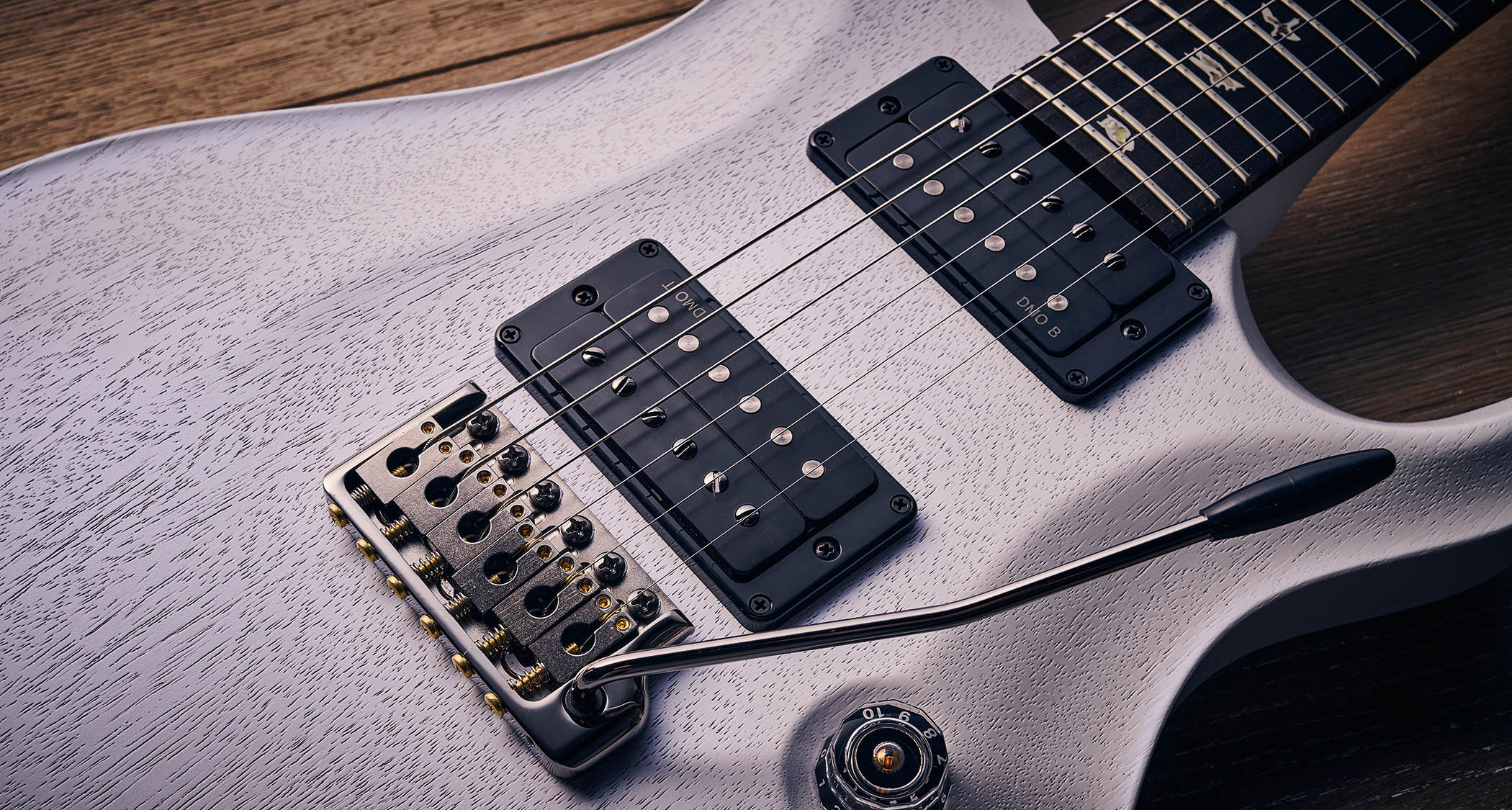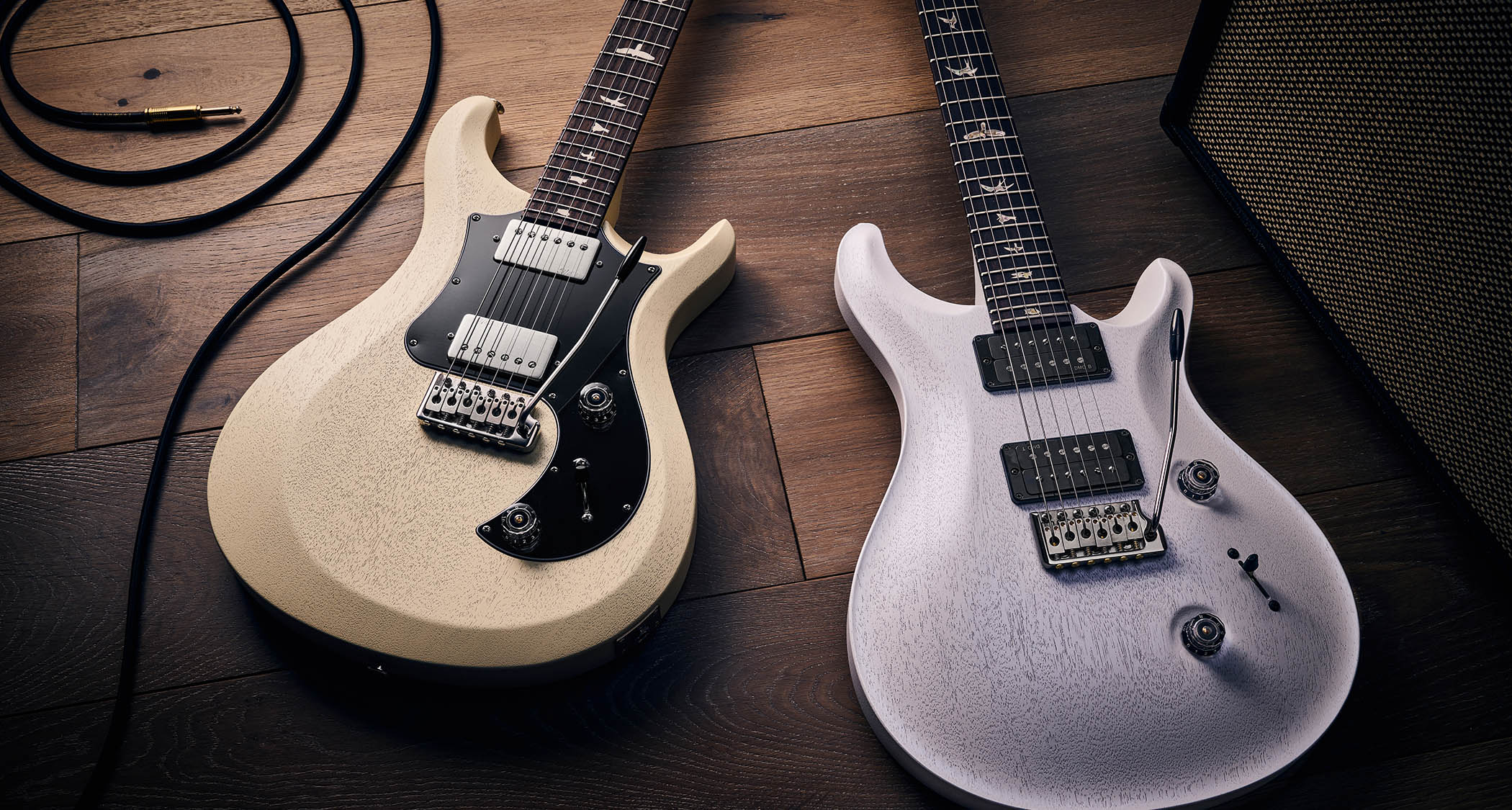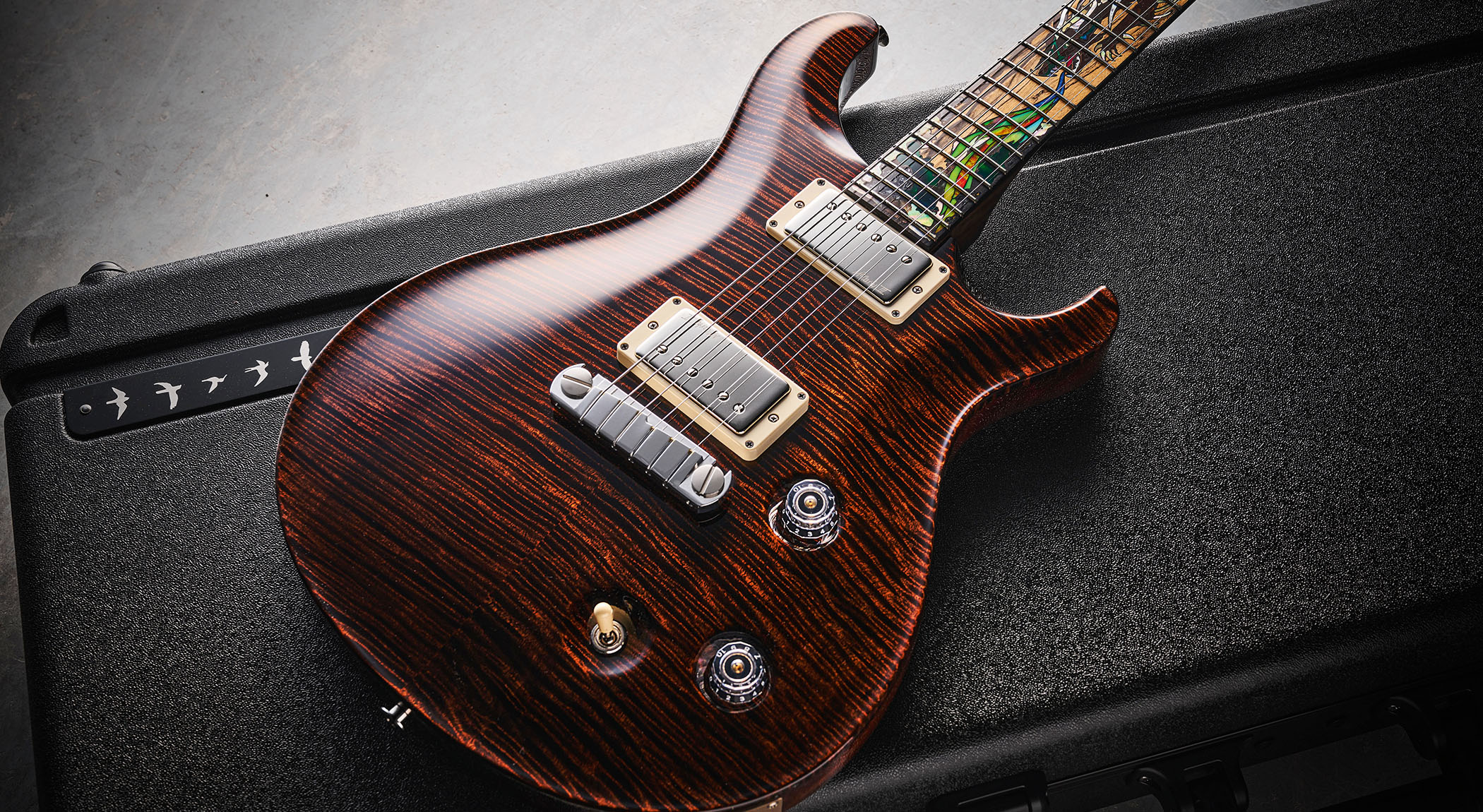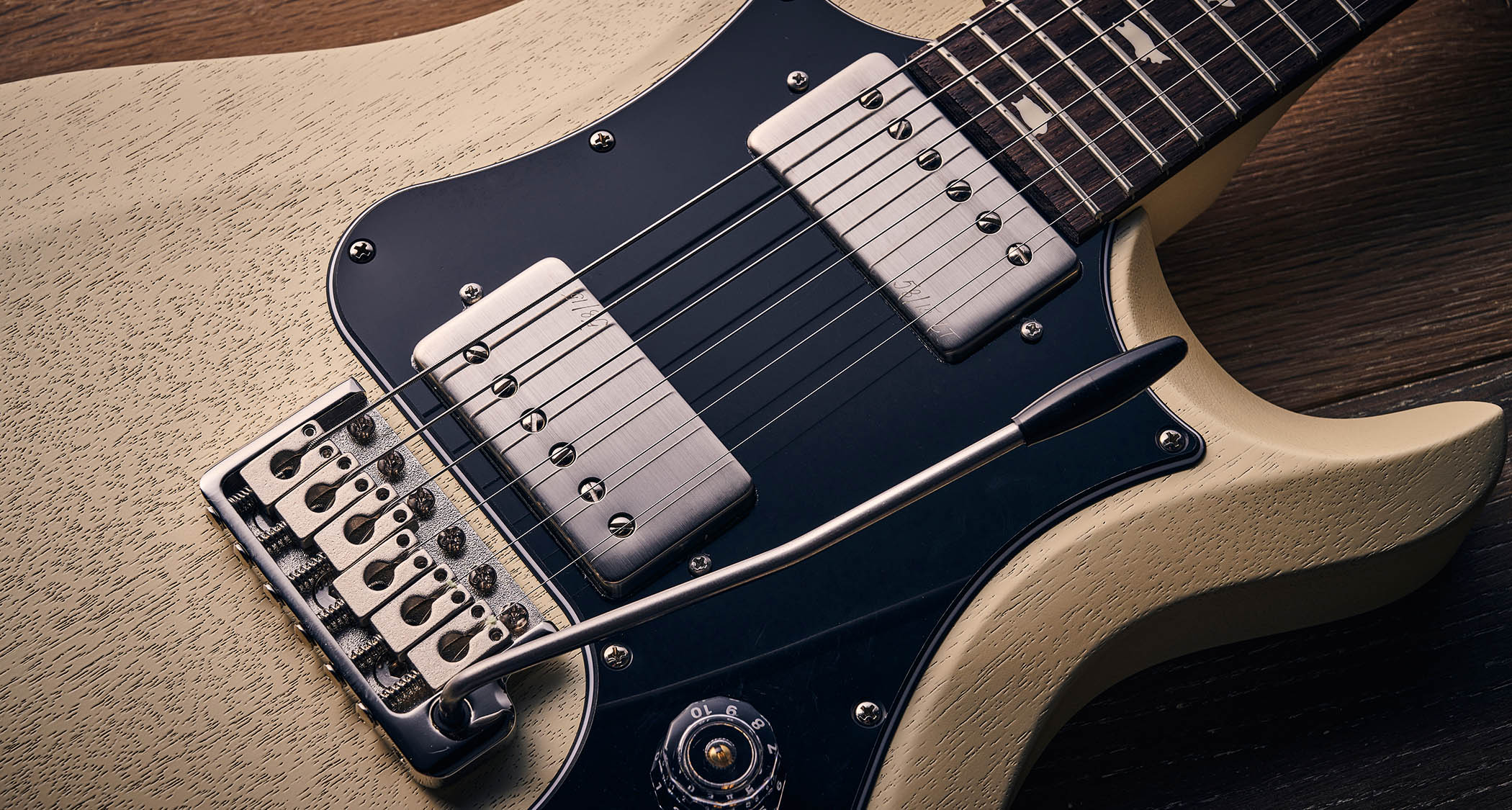
This year’s 40th anniversary marks the year, 1985, that the Paul Reed Smith company moved into its first factory in Virginia Avenue, Annapolis.
Paul had, in fact, made his first ‘real’ guitar in 1975, and as the decade progressed he went from repairman to a custom builder of some note, creating instruments for the likes of Ted Nugent and Peter Frampton (both in 1976 and the latter was the first with bird inlays), Al Di Meola, Roy Buchanan, Howard Leese (the first curly-maple-topped PRS in 1980) and culminating in Carlos Santana, which involved the beginnings of the PRS vibrato system, also in 1980.
It’s already the stuff of legend, although Paul had not yet created the now-classic outline shape that was fully formed by 1984.
Later that year, he set off on a tour of East Coast USA retailers armed with a pair of his guitars – a maple-topped Custom and a Pearl White all-mahogany guitar, which was originally just called the ‘PRS guitar’ and would become the Standard in 1987.

The aim was to generate orders that would go part of the way to raising the necessary capital to start the production company in 1985.
So while that all-mahogany PRS wasn’t yet a Standard, it was there right at the very beginning. Why, then, isn’t the new Standard 24 a part of the 40th Anniversary celebrations?
“Well, we wanted to bring the Standard back as a permanent model, not just a limited 40th Anniversary run,” explains Judy Schaefer, PRS’s director of marketing.
Back in the day, the soon-to-be-Standard “was just a simple guitar: I didn’t think people wanted complex guitars”, said Paul in an enlightening PRS Archives video, remembering the early instrument you see pictured here.
And today, Paul says that was basically true: “We had the PRS and the Custom. What blew me away was that everyone wanted the curly [maple] top and everybody wanted the bird inlays. I thought the birds were like a one-in-eight option that would be taken up. But people were calling, saying, ‘I’ve got to have the birds.’ I was like, what?
“But the Jimmy Wallace [guitar dealer and founder of the Dallas International Guitar Festival] phone call was the one,” laughs Paul. “He said, ‘Now Paul, you go in the back there and pick me a real nice curly maple top.’ I said, ‘You want me to cherry‑pick you a top?’ He said yes, but I said, ‘Well, I’m charging you.’
“That was the day the ‘10 Top’ thing started. I wasn’t going to go back and pick a special top out of a pile of wood for somebody without charging them extra. Initially, I’d wanted it to be ‘you got what you got’, like in the old Les Paul days.”
Looking Forward
Today’s returning Standard 24 mirrors the current spec Custom 24 in all but that maple top and its gloss nitro finish, and both guitars introduce the new DMO humbuckers, the latest in a long line of pickups offered by PRS over these past 40 years. What’s the deal here?
“You’re not going to like my answer,” offers Paul enigmatically. “The first time I heard the DMO humbucker I went, ‘John Sykes!’ It had that wide open, beautiful John Sykes tone. Except we’ve made the DMOs a little more wide open.
“To me, I always really liked the sound of really early ’70s Les Paul Customs without the covers because they were aggressive, wide-open sounding, they sounded musical, good for rhythm guitar, good for lead guitar, good for a lot of things. Now that’s from a rock point of view.”
We mention that the DMOs sound to us like a hotter pickup than they actually are.
“Look, pickup power is magnet power and turns mixed,” Paul says. “Then the cover is a filter that was designed to get rid of buzz and hum. It was a mu-metal can around the humbucking coil, which is what they put in audio consoles.
“But if you’re getting rid of buzz and hum you’re also getting rid of volume, so it was a balance between having it sweeter sounding but also a little bit quieter.
“So a McCarty III [which is covered and another new pickup for 2025] and a DMO are basically the same pickup, but one has a cover and the other one doesn’t.
“[The cover] makes a huge difference in the tone. If there are wing magnets in the pickups, that makes them even louder – which would make them very similar to our TCI pickups. So the reason it sounds ‘hot’ is because there’s no filter on it, no cover.
I finally learned how to get rid of the noise when you touch, or don’t touch, the guitar
“Power comes from magnetic strength and turns, but there’s one other place the power comes from,” Paul explains. “If the pickup has more higher midrange, then it sounds louder.”
And part of the DMO’s and McCarty III’s new blend comes from a slightly different magnet material: “The new stuff we have [American Alnico 2] has more higher midrange and less treble and about the same amount of bass. So it’s got more musical high midrange. DMO and the TCI pickups are very close to each other [in terms of sound].
“We’re also using wing magnets in the DMO Treble pickup only, which makes them louder so the DMO Treble is going to be way louder than the Bass pickup. It’s like two P-90s stacked side by side.”
Fine Details

As we noticed checking over the new Standard, things are a little different in the control cavity, too, not least that there’s a very large tone capacitor.
The reason that 600-volt cap is in there is not because of its rating. It’s because of its sound. It’s a 600-volt polypropylene capacitor
Paul explains: “In an old Fender Esquire with the switch positioned fully to the right, the tone control is disconnected; it’s significantly brighter than the middle-switch position where the tone control is wired in. Then, fully to the left, that tone control is turned all the way off.
“So that switch on the Esquire is three ways of doing the tone control: no tone control, the tone control is hooked up, and then the tone control is in circuit but fully rolled off. If you put an Esquire into that right position, the high-end will take your head off, so that tone control – even if it’s turned all the way up – is a filter.
“The reason that 600-volt cap is in there is not because of its rating,” Paul adds. “It’s because of its sound. It’s a 600-volt polypropylene capacitor.” Does this mean we’ll see these capacitors in the other Core guitars? “We’re switching over as fast as we can on everything.”

PRS guitars have rarely been fully screened. “But we’re doing it now,” confirms Paul, “because we found a way to get rid of almost all the noise. It’s not just the shielding. We’re also doing something special inside the pickup – there’s a grounding scheme inside the pickup that really helps the noise to drop by another 6dB.
“What had originally happened was that we had started making the TCI pickups with fibreboard bases, and because there was no ground plane between the pickup and the stuff coming in the back of the guitar, we wanted to put a ground plane in the [pickup and control] cavity. When we started doing that we were listening to the noise levels and it was significantly better.”

“The number one reason we did it, though, was that we found a way that, if you do it right, if you touch the guitar then don’t touch the guitar, it didn’t go buzz – no buzz. We know when you touch the guitar in the studio the buzz goes away. That guitar doesn’t do that. The guitar you have should have been very quiet.
“See, we didn’t understand how to do it. Ground planes are very tricky. The people that make audio consoles understand ground planes incredibly well; the guitar industry hadn’t taught me enough about how to do it well.
“But I’ve finally learned how to do it well – to get rid of the noise when you touch, or don’t touch, the guitar. So we decided to do it. We don’t use a carbon-based [shielding] paint, we use a nickel-based paint – the same thing a pickup cover is made of.”
Still learning, still tweaking and still improving. Proving that PRS guitars, despite the name of these latest models, are far from standard.
- “Finely tuned instruments with effortless playability and one of the best vibratos there is”: PRS Standard 24 Satin and S2 Standard 24 Satin review
- This article first appeared in Guitarist. Subscribe and save.







